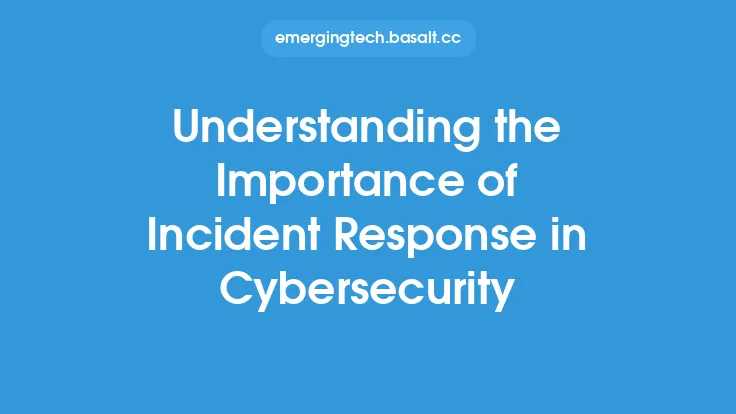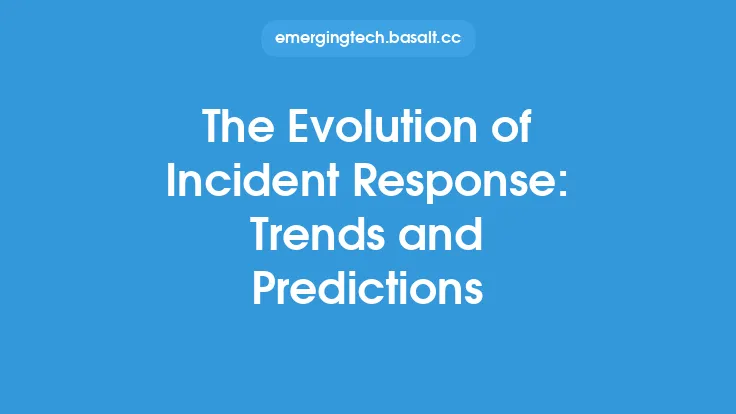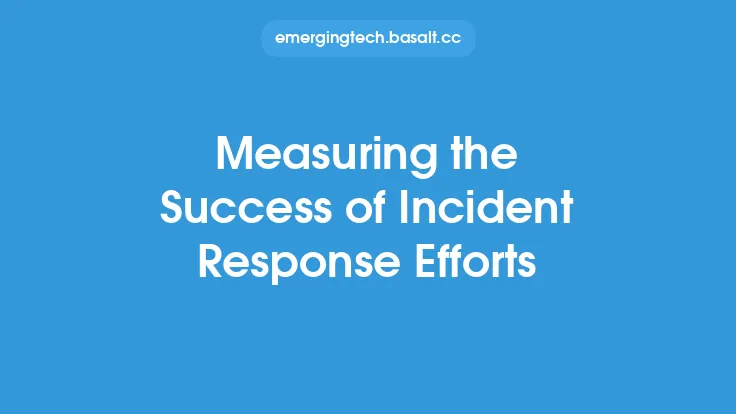Effective communication is the backbone of any successful incident response effort. When a security incident occurs, clear and timely communication is crucial to minimize the impact, prevent further damage, and ensure a swift recovery. In the context of incident response, communication refers to the exchange of information between various stakeholders, including the incident response team, management, customers, and external parties such as law enforcement or regulatory bodies. In this article, we will delve into the role of communication in incident response, its importance, and best practices for effective communication during an incident.
Importance of Communication in Incident Response
Communication plays a vital role in incident response, as it enables the incident response team to respond quickly and effectively to a security incident. Clear communication helps to ensure that all stakeholders are informed and aware of the incident, its impact, and the actions being taken to mitigate it. This, in turn, helps to prevent confusion, miscommunication, and delays in responding to the incident. Effective communication also helps to maintain transparency and trust between the organization and its stakeholders, which is essential for maintaining reputation and customer loyalty.
Communication Channels and Stakeholders
During an incident, communication channels and stakeholders may vary depending on the nature and scope of the incident. The incident response team should identify the relevant stakeholders and establish communication channels to ensure that all parties are informed and updated throughout the incident response process. Common stakeholders include:
- Incident response team members
- Management and executives
- Customers and end-users
- External parties such as law enforcement, regulatory bodies, or vendors
- Public relations and communications teams
The incident response team should establish multiple communication channels, including email, phone, instant messaging, and video conferencing, to ensure that all stakeholders can be reached and informed in a timely manner.
Communication Plan and Protocols
A well-defined communication plan and protocols are essential for effective communication during an incident. The communication plan should outline the communication channels, stakeholders, and protocols for communicating with each stakeholder group. The plan should also define the types of information to be communicated, such as incident updates, status reports, and resolution timelines. Protocols for communication should include:
- Incident classification and prioritization
- Initial notification and alerting procedures
- Ongoing updates and status reports
- Communication of incident resolution and post-incident activities
The communication plan and protocols should be regularly reviewed and updated to ensure that they remain relevant and effective.
Technical Communication Considerations
From a technical perspective, communication during an incident response effort involves the exchange of sensitive and potentially confidential information. To ensure the security and integrity of this information, the incident response team should implement technical controls and protocols, such as:
- Encryption of communication channels
- Secure file sharing and collaboration tools
- Access controls and authentication mechanisms
- Incident response team collaboration platforms
The incident response team should also be aware of the potential for communication channels to be compromised or intercepted during an incident, and take steps to mitigate these risks.
Communication Metrics and Monitoring
To ensure that communication is effective during an incident, the incident response team should establish metrics and monitoring mechanisms to track communication performance. These metrics may include:
- Response times to stakeholder inquiries
- Timeliness and frequency of incident updates
- Stakeholder satisfaction with communication
- Communication channel usage and effectiveness
The incident response team should regularly review and analyze these metrics to identify areas for improvement and optimize communication protocols and procedures.
Post-Incident Communication and Review
After an incident has been resolved, the incident response team should conduct a post-incident review to assess the effectiveness of communication during the incident. This review should include:
- Evaluation of communication protocols and procedures
- Assessment of stakeholder satisfaction with communication
- Identification of areas for improvement
- Updates to the communication plan and protocols
The post-incident review provides an opportunity for the incident response team to reflect on communication performance and make improvements to ensure that communication is more effective in future incidents.
Best Practices for Effective Communication
To ensure effective communication during an incident, the incident response team should follow best practices, including:
- Establishing clear and concise communication protocols
- Defining stakeholder groups and communication channels
- Providing regular and timely updates
- Ensuring transparency and honesty in communication
- Using secure and reliable communication channels
- Continuously monitoring and evaluating communication performance
By following these best practices, the incident response team can ensure that communication is effective, efficient, and secure, and that all stakeholders are informed and supported throughout the incident response process.
Conclusion
In conclusion, communication plays a critical role in incident response, enabling the incident response team to respond quickly and effectively to a security incident. Effective communication helps to minimize the impact of an incident, prevent further damage, and ensure a swift recovery. By establishing clear communication protocols, defining stakeholder groups and communication channels, and providing regular and timely updates, the incident response team can ensure that all stakeholders are informed and supported throughout the incident response process. By following best practices for effective communication, organizations can maintain transparency and trust with their stakeholders, protect their reputation, and minimize the risk of future incidents.





